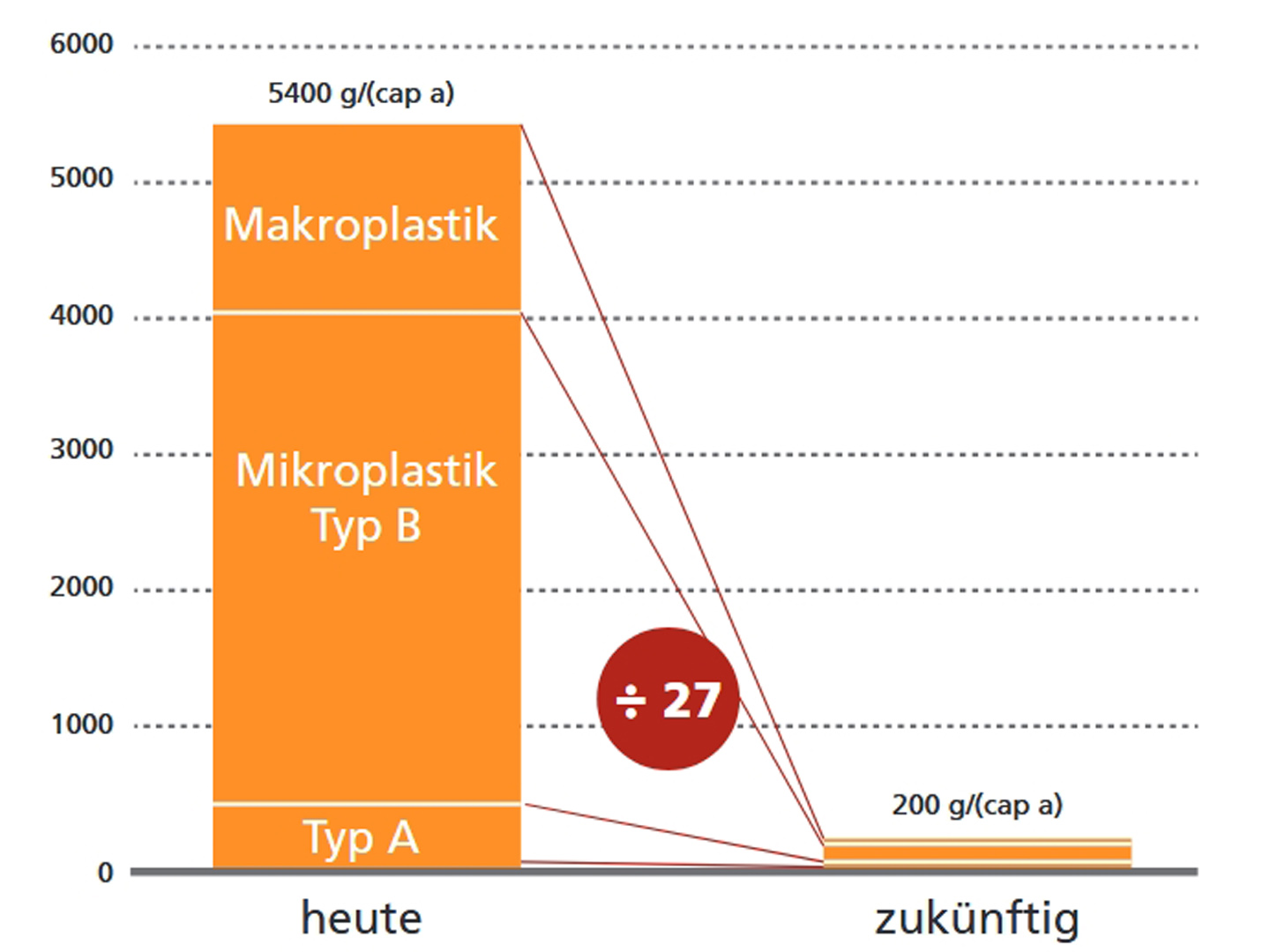It is difficult to meet the regulatory, scientific, and communicative requirements together. By limiting the size (smaller than 5 mm) and restricting it to special plastics or areas of application, a limit is drawn that may unjustifiably include or exclude problem areas. Our mission: A definition of microplastics should be based on environmental impact. More detailed information can be found in our study on "Microplastics in cosmetics". A classification of the origin also helps when allocating responsibility. Depending on the source, this lies more with the producer or the consumer.
Microplastics glossary
Definitions and information on the origin, effect, and consequences of plastics in the environment.
Microplastics – plastic particles
Primary microplastics
Primary microplastics type A
Industrially produced plastic particles, the loss of which is deliberately accepted or caused by carelessness. These include, for example, friction bodies, called microbeads, in cosmetics or plastic pellets.
Primary microplastics type B
Occur during the use of plastic due to abrasion, weathering or decomposition. This is the case, for example, with car tires, shoe soles, textiles or paints.
Secondary microplastics
Plastic particles that are created in the environment by fragmentation and weathering of larger plastic parts (“macroplastics“).
Macroplastics
Plastic waste, mainly packaging, plastic bags or bottles. These often end up in the environment through careless disposal (“littering“).
Plastic in the environment
Macroplastics in the environment
According to estimates, approximately 1.4 kg of macroplastics are emitted into the environment per capita and year in Germany. For Germany, with its 82.5 million inhabitants, this is a total of approx. 116,000 t/a.
Microplastics in the environment
A good 4 kg of microplastics are released into the environment per capita and year in Germany. For Germany with its 82.5 million inhabitants, this amounts to a total of approx. 330,000 t/a. We can assume that microplastics are already present in all areas of the environment: in the air, in drinking water, and in food. This is due to the fact that we use plastics everywhere and the emissions are spread by wind and water. At the same time, once emitted, microplastics can hardly be removed again from today’s viewpoint. In this context, the microplastics problem is comparable to climate change.
Consequences
The intake of microplastics by humans cannot be excluded – with as yet unknown consequences. The consequences of microplastics for the environment are also still unknown. So far, no specific potential danger has been identified. The current state of knowledge must be expanded.
Our responsibility
The responsibility for the pollution of plastics into the environment lies more with the producer or the consumer, depending on the source. One thing is clear: The release of plastics into the environment must be reduced. This concerns us all!
What can we do to reduce our plastic emissions?
We need to reduce our annual plastic emissions from 5400 to 200 grams per capita to avoid further environmental damage. What can we do to make this happen?
Each of us
- Avoid littering, collect waste.
- Do not dispose of waste via wastewater.
- Use durable tires, drive defensively.
- Avoid products with microbeads.
Politics and municipalities
- Expand deposit systems
- Ban products that are often littered
- Create incentives for high recycling rates in primary products.
Science and industry
- Develop low-abrasion and low-weather plastics
- Improve the degradability of polymers
- Increase the recyclability of plastics
- Substitute critical additives
- Develop new filter systems
Urban water management and street cleaning
- Optimize and expand street cleaning
- Develop retention systems in separate sewer systems and for combined water discharges
- Improve rainwater drainage
- Intensify and optimize street cleaning
- Reduce plastic contamination in sewage sludge
 Plastic emissions per capita and year must be reduced in the future.
Plastic emissions per capita and year must be reduced in the future.
Further information
You can read more detailed definitions and information about microplastics in our Microplastics Consortium Study.
 Fraunhofer Institute for Environmental, Safety and Energy Technology UMSICHT
Fraunhofer Institute for Environmental, Safety and Energy Technology UMSICHT